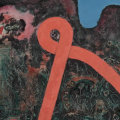The Genetic Code of Memory. Azerbaijani Carpets
From 16 May to 15 September 2024, the Museum of Decorative Arts and Design in Riga (Skārņu iela 10) will host a unique Azerbaijani carpet collection exhibition, The Genetic Code of Memory. This is the first large-scale exhibition of Azerbaijani textile art in Riga, which will provide a broader insight into the heritability of ancient weaving traditions and, at the same time, prove that the seemingly far can become close. The exhibition was created through cooperation with the Embassy of the Republic of Azerbaijan to Latvia and the 'Azerkhalcha' Open Joint Stock Company, celebrating the 30th anniversary of the establishment of the diplomatic relations between Azerbaijan and Latvia.
Genetic memory is a part of the culture and morality of human society and is the main subject of the exhibition "The Genetic Code of Memory. Azerbaijani Carpets". Over time, it has found its expression in the traditions of carpet weaving. Threads, knots, patterns – Azerbaijani carpet is not just a beautiful interior item, but the life of a whole nation woven over thousands of years. With their ancient history, Azerbaijani carpets are known worldwide for their unique ornamentation, composition, and colour solution embodying legends and facts, losses and victories, pride for the past and hope for a beautiful future. In 2010, the Traditional art of the Azerbaijani carpet weaving was inscribed on the UNESCO Representative List of the Intangible Cultural Heritage of Humanity. The exhibition collection created by "Azerkhalcha" is a collective work of artists and master craftsmen based on ancient traditions and innovative searches of modern designers. The main task of "Azerkhalcha" is the contemporary and dynamic development of the art of carpet weaving, while preserving the centuries-old craft.
The similarities between Latvian and Azerbaijani ornaments, found in almost all art forms, are striking and reflect various aspects of cultural interaction, historical connections, or common themes that have influenced Latvian and Azerbaijani culture. The solar signs, swastikas, animal and bird images and common compositional patterns in ornamental decoration presented in this exhibition are evidence of the endless interpenetration of beliefs, values, and echo traditions of ancient cultures.
Alongside, the exhibition also includes unique carpet patterns. This is part of the ethnographic heritage collected by Latvian tapestry artist Jūlijs Straume (1874–1970) in the territory of Azerbaijan during his expeditions and recorded in his hand-coloured photographs. This year, we celebrate the 150th anniversary of the artist. The rich experience that Straume gained by studying the ancient traditions of the crafts of the Caucasus region complemented Latvian professional applied art with motifs of original patterns, composition designs, and colour palettes, which he later successfully incorporated into his creative works after returning to Latvia in 1923. Thanks to the artist's enthusiasm, the Turkic knots, before unused and unlearned in weaving practice in Latvia, became very popular.
The Museum of Decorative Arts and Design is truly honoured and pleased to have the opportunity to organize the first large-scale exhibition of the collection of Azerbaijani carpets. The specially prepared educational and event programme of the exhibition will help visitors get to know Azerbaijan's cultural, historical, and artistic traditions, as well as perceive the close link between the cultural and historical heritages of both countries.








